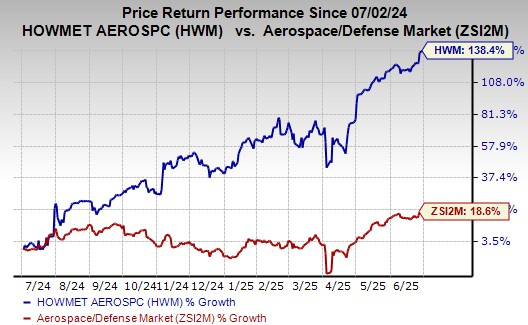“`html
Stock Splits: Driving Forces Behind Wall Street’s Recent Rally
For over three decades, investors have tended to chase the next big trend or innovation. Recently, artificial intelligence (AI) has captured their attention, significantly lifting the Dow Jones Industrial Average, S&P 500, and Nasdaq Composite to all-time highs.
However, AI isn’t the sole driver of Wall Street’s ongoing bull market, which celebrated its second anniversary in October. Excitement around stock splits in significant companies has also pushed the broader market upward.
A stock split allows a publicly traded company to modify its share price and total share count simultaneously. These adjustments are cosmetic—they do not affect market capitalization or operational performance.
Stock splits fall into two categories, but they are viewed differently by investors. Reverse splits, which raise share prices and reduce share counts, are often seen unfavorably. Investors generally interpret these moves as signs of operational weakness, typically undertaken to avoid delisting from major exchanges.
Conversely, forward stock splits are welcomed. This type aims to lower share prices, making shares more affordable for those who cannot buy fractional shares. Companies that execute forward splits frequently outperform peers in innovation and execution. In the previous year, major firms like Nvidia, Broadcom, Chipotle Mexican Grill, and Walmart completed forward splits.
So far in 2025, three prominent companies have enacted splits, with a fourth potentially on the way.
Stock Split Activity Gathers Momentum in 2025
The year began with cautious enthusiasm for stock splits, but interest has surged among top businesses recently. O’Reilly Automotive (NASDAQ: ORLY) announced its largest-ever stock split—a 15-for-1 plan in mid-March. If approved by shareholders on May 15, the split will take effect after trading closes on June 9.
O’Reilly’s stock has been on an upward trajectory, bolstered by a robust share repurchase strategy. The company has repurchased nearly $26 billion of its common stock since 2011, reducing its outstanding share count by 59.4%. Firms with consistent or rising net income and active buyback initiatives typically see increases in earnings per share (EPS).
In mid-April, Interactive Brokers Group (NASDAQ: IBKR) announced its first-ever stock split—4-for-1—set to take effect after June 17. The company has thrived amid economic growth and sustained Wall Street optimism, enjoying increases in its customer base, equity holdings, and trade volume. Additionally, rising interest rates on margin loans have contributed to its success.
Fastenal (NASDAQ: FAST) is the third company to announce a split, marking its ninth in its 38 years as a public entity. This 2-for-1 forward split will occur after the market closes on May 21. Fastenal’s stock has skyrocketed by nearly 125,000% since its initial public offering, thanks in part to its innovative FASTVend solutions that streamline supply chain management for clients.
Cautions in Choosing the Next Stock Split
The critical question remains: Which company will be the next to announce a stock split?
While there appears to be a plethora of candidates—50 companies had share prices exceeding $500 as of May 8—additional factors must be considered in identifying potential splits. A company’s board must express a desire to make shares more accessible to retail investors. For instance, Berkshire Hathaway and NVR have historically shown no inclination to split their stock, while Costco Wholesale believes that fractional-share purchasing provides sufficient access without needing a split.
Another essential consideration is the balance of institutional versus retail ownership. Institutional investors, managing billions in assets, may not be as constrained by product affordability when compared to individual retail investors. Each of these dynamics plays a crucial role in determining the next potential candidates for a stock split.
“`
Is Meta Platforms the Next Company to Split Its Stock?
High share prices often limit retail investor access. Therefore, firms with substantial institutional ownership, like AutoZone, Netflix, and Booking Holdings, may not see the benefit of initiating stock splits. As of May 8, their shares closed at approximately $3,675, $1,144, and $5,165, respectively, making them less accessible to everyday investors who can’t purchase fractional shares.
Examining ownership percentages reveals that retail investors own only 11.3% of AutoZone, 19.6% of Netflix, and 9.8% of Booking Holdings. These low figures suggest little motivation for these companies to initiate a stock split.

Image source: Getty Images.
Meta Platforms: A Strong Candidate for a Stock Split
In contrast, one company stands out as a potential candidate for a stock split: Meta Platforms (NASDAQ: META). With a share price that exceeded $740 in February and is currently around $600, it presents an interesting case.
Meta has never conducted a stock split, but its retail investor ownership is notably higher at nearly 28%. This significant proportion positions Meta as a prime candidate for a stock split, providing easier access for potential investors.
Additionally, Meta’s share price is likely to rise further. A split could make investing in the company more feasible for those who cannot engage in fractional share purchasing.
The backbone of Meta is its popular social media platforms, including Facebook, Instagram, WhatsApp, Threads, and Facebook Messenger. In March, these platforms collectively reached 3.43 billion daily active users globally, the highest in the industry. This extensive user base provides Meta with exceptional advertising pricing power.
Currently, advertising constitutes about 98% of Meta’s net sales and remains highly profitable. However, the company’s future hinges on adapting to advancements in AI. CEO Mark Zuckerberg is making substantial investments in AI-enhanced data centers, which are vital for both Meta’s metaverse ambitions and improving the effectiveness of its advertising initiatives.
Financially, Meta is in a strong position, with over $70 billion in cash, cash equivalents, and marketable securities as of March. Moreover, the company generated nearly $17.6 billion in net cash during the first quarter of 2025, allowing for a measured pace in the development of innovative products and features.
While numerous stocks trade above $500 per share, Meta Platforms is an exceptional candidate for a stock split based on its current metrics and market stature.
Should You Invest $1,000 in Meta Platforms Now?
Before considering an investment in Meta Platforms, here are some insights to consider:
The Motley Fool’s analyst team has identified what they believe are the ten best stocks for investment right now, and notably, Meta Platforms is not on that list. Those stocks that made the cut are poised for significant returns in the coming years.
For context, Netflix made this list on December 17, 2004. If you had invested $1,000 then, it would be worth $614,911 today. Similarly, Nvidia entered the list on April 15, 2005, and an investment of $1,000 back then would now be valued at $714,958.
The total average return for the Motley Fool’s stock advisory programs is 907%, representing substantial outperformance compared to 163% for the S&P 500. Don’t miss the latest top 10 list when you join the program.
*Returns as of May 5, 2025.
Randi Zuckerberg, a former market development director and spokeswoman for Facebook, is on The Motley Fool’s board. Sean Williams has positions in Meta Platforms. The Motley Fool holds shares in and recommends several companies, including Meta Platforms. The Motley Fool has a disclosure policy.
This article reflects the author’s views and does not represent the opinions of Nasdaq, Inc.






